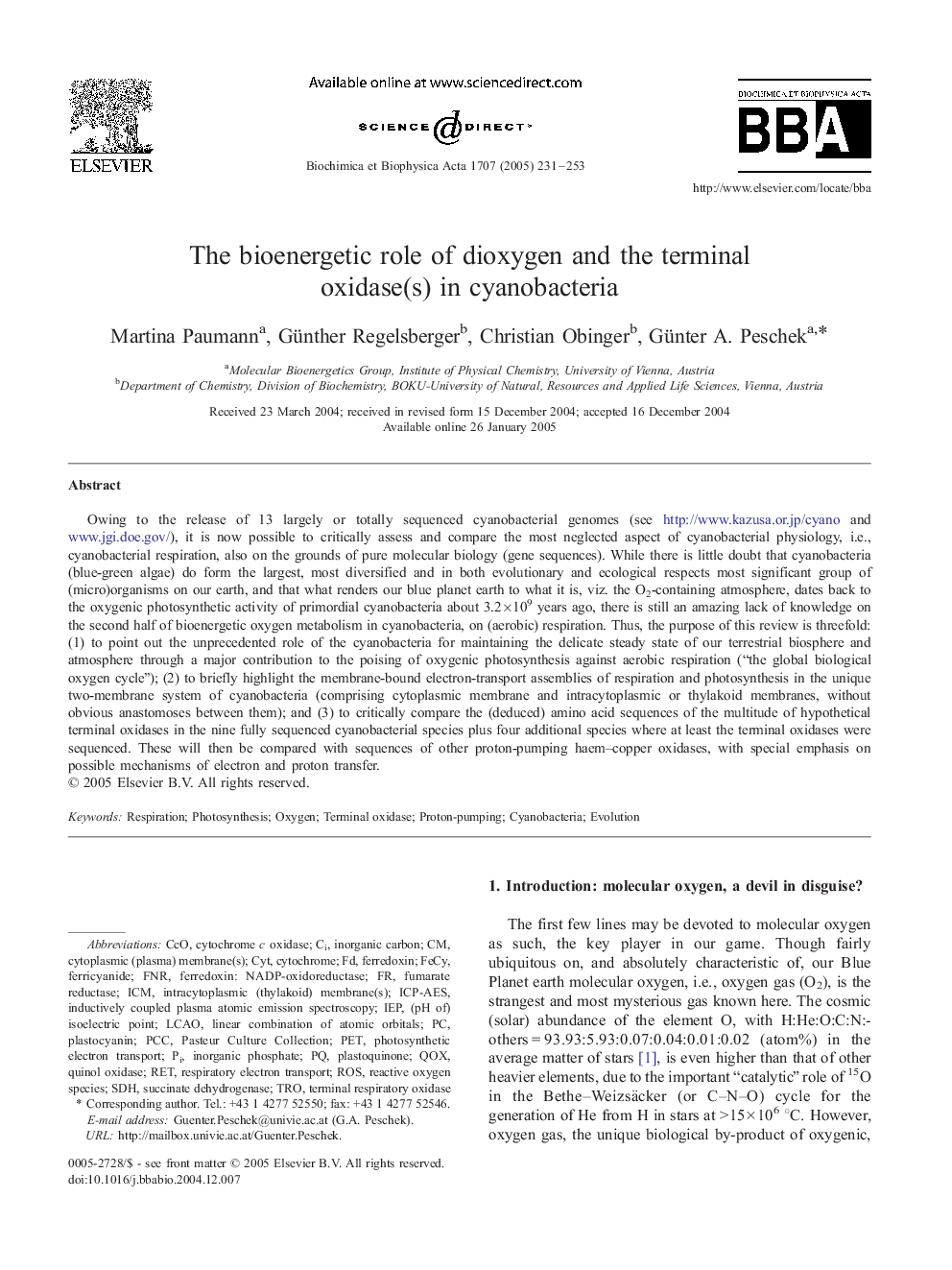| Article ID | Journal | Published Year | Pages | File Type |
|---|---|---|---|---|
| 9884698 | Biochimica et Biophysica Acta (BBA) - Bioenergetics | 2005 | 23 Pages |
Abstract
Owing to the release of 13 largely or totally sequenced cyanobacterial genomes (see http://www.kazusa.or.jp/cyano and www.jgi.doe.gov/), it is now possible to critically assess and compare the most neglected aspect of cyanobacterial physiology, i.e., cyanobacterial respiration, also on the grounds of pure molecular biology (gene sequences). While there is little doubt that cyanobacteria (blue-green algae) do form the largest, most diversified and in both evolutionary and ecological respects most significant group of (micro)organisms on our earth, and that what renders our blue planet earth to what it is, viz. the O2-containing atmosphere, dates back to the oxygenic photosynthetic activity of primordial cyanobacteria about 3.2Ã109 years ago, there is still an amazing lack of knowledge on the second half of bioenergetic oxygen metabolism in cyanobacteria, on (aerobic) respiration. Thus, the purpose of this review is threefold: (1) to point out the unprecedented role of the cyanobacteria for maintaining the delicate steady state of our terrestrial biosphere and atmosphere through a major contribution to the poising of oxygenic photosynthesis against aerobic respiration (“the global biological oxygen cycle”); (2) to briefly highlight the membrane-bound electron-transport assemblies of respiration and photosynthesis in the unique two-membrane system of cyanobacteria (comprising cytoplasmic membrane and intracytoplasmic or thylakoid membranes, without obvious anastomoses between them); and (3) to critically compare the (deduced) amino acid sequences of the multitude of hypothetical terminal oxidases in the nine fully sequenced cyanobacterial species plus four additional species where at least the terminal oxidases were sequenced. These will then be compared with sequences of other proton-pumping haem-copper oxidases, with special emphasis on possible mechanisms of electron and proton transfer.
Keywords
IEPICMCCOICP-AESFNRRespiratory electron transportLCAOPCCQoXSDHROSOxygenTROTerminal oxidaseLinear combination of atomic orbitalsRespirationRETPhotosynthetic electron transportsuccinate dehydrogenaseCyanobacteriacytcytochromecytochrome c oxidaseinductively coupled plasma atomic emission spectroscopyPhotosynthesisferricyanideEvolutionFerredoxininorganic phosphatefumarate reductaseFecyPasteur Culture CollectionPETPlastocyaninplastoquinoneinorganic carbonQuinol oxidaseReactive oxygen species
Related Topics
Life Sciences
Agricultural and Biological Sciences
Plant Science
Authors
Martina Paumann, Günther Regelsberger, Christian Obinger, Günter A. Peschek,
